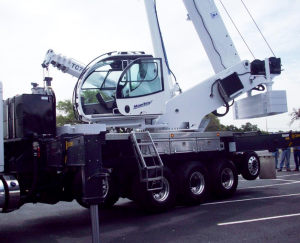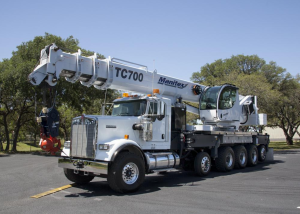By Jarad Van Wagoner, Director of Development, NAHETS
Safety. Efficiency. Risk Management. These are key terms and concepts throughout the construction, energy, and mining industries. Each stakeholder in the process—operators, supervisors, employers, general contractors, insurers, clients, and end users—depends on the skills and knowledge of the operators. Accidents, inefficiency, and sub-standard work increase costs and reduce quality. Responsible parties are obligated to ensure that their operators are skilled, knowledgeable, and safe through the use of effective assessment, certification, and training programs.
Companies have two basic options in terms of formal assessment and training programs. First, they can run a program internally. Using in-house tests and training plans they can work directly with their own operators to make sure they have the necessary skills and knowledge. Second, they can opt to have an external, third-party manage some or the entire assessment and training program.
An internal program, on the surface, seems to have several obvious advantages.
- Cost Savings. The assumption is that a company will keep costs down by managing their own training program. Using in-house trainers and supervisors, a company should be able to save money as opposed to bringing in outsiders.
- Familiarity with Operator Skills and Training Needs. A company often feels that they are very aware of the strengths and weaknesses of their operators due to their daily proximity.
- Control of Training. Companies like to be able to set their own training schedules and control the topics that will be covered. Supervisors and managers are familiar with construction and job schedules and know when training can be scheduled.
- Unique Operations. Many companies believe that their operations are unique compared to other parts of industry. An internal training program allows them to make sure their needs are met and avoid wasting time on irrelevant topics and information.
Many of the advantages listed above have the potential to be disadvantages as well. Consider the following:
- Higher Costs. Often companies lose time and money as operators and supervisors are assigned training duties as additional responsibilities. The time required to run these programs often isn’t taken into consideration when planning personnel and job schedules resulting in loss production time. Records maintenance also takes up additional time and money. Time is wasted, as employees with no experience and limited familiarity with regulatory requirements are required to establish, run, and maintain training programs. These hidden costs in time and money often aren’t considered in the budgeting and planning process.
- Lack of Clarity. Companies focus the bulk of their time and effort on completing jobs and generating revenue. In pursuit of these purposes it is easy to lose focus on assessment and training needs. Up against deadlines and going from job-to-job, supervisors, training directors, and safety directors are forced to fight for time to assess the skills and knowledge of their operators much less provide meaningful training. The focus on job completion reduces the ability of supervisors and others to focus on specific training needs of individual operators.
- Accidents and Inspections = Loss of Control. Too often training is ineffective as training presentations are too general or not enough time is allowed. Accidents and mistakes may be the unfortunate result of insufficient or ineffective training. Once an accident occurs, or an inspection reveals a discrepancy, control is lost as the company records are reviewed and mandatory meetings and trainings are scheduled.
- Industry Standards. Internal training programs often rely on internal definitions, concepts, and standards. Internal standards are difficult to explain to outside stakeholders, making it difficult to provide a transparent understanding of what an operator does or does not know. Without the transparency of industry standards, insurers and inspectors are less likely to have confidence in internal training programs.
A training program managed by a third-party, while it may have higher up front costs, has several advantages.
- Lower Costs. Third-party training programs tend be lower cost over the long run. Costs are upfront and are easier to budget accurately. Hidden costs are removed. Supervisors, training directors, and safety directors save time and are able to focus on their primary roles and important decisions rather than having to spend extra time planning and executing training programs.
- Expertise. Experts staff a third-party training organization. These experts understand how to assess operators, how to develop and implement training programs, and the associated legal and regulatory issues. They work directly with supervisors, employers, and other stakeholders to make sure that needs are met and that the training program works within the framework of the company’s standard operations. Using their expertise, these training experts can develop and execute targeted training programs that meet the most pressing needs for operators.
- Increased Clarity. A well structured assessment and training program is based on common language and industry standards. Third-party providers use a curriculum that is generally accepted across the industry. While this may be challenging initially for operators and supervisors whose training was more localized or internal, it provides transparency to all stakeholders in terms of what operators should know and be able to do. Such programs remove the guesswork or the “I hope they know” factor from training and operations.
- Decreased Risk. A robust and well-managed training program will reduce the risk and likelihood of accidents through the use of accurate assessments of training needs and opportunities that are focused and effective in addressing those needs. Operators are more likely to pay attention to and participate in training programs when they know that one of their deficiencies, or the deficiency of a co-worker, is being addressed. Training performed by a trained trainer, whether a company employee who is properly trained or by a third-party trainer, is likely to be more effective at presenting the material and interacting with the operators. Effective training programs based on industry standards for safety and efficiency, are going to provide operators with correct and useful knowledge and skills as they operate dangerous equipment and perform dangerous tasks. All of this combines to reduce the likelihood of accidents and injuries on the job.
- Decreased Liability. When an accident or injury occurs on the job stakeholders must deal with liability issues related to the accident. Did they provide adequate training? Were they aware of the operator’s limitations? Did they properly document training and performance? At this point supervisors, employers, attorneys, and other stakeholders become very interested in the effectiveness of the company’s training program. Whereas before the training program might have been a secondary concern, everyone is now checking to make sure that all “i”s are dotted and “t”s are crossed. A failure on the part of the company to manage an effective training program properly may cost the company in attorney fees and increased insurance costs, not to mention additional time and money spent on fixing any shortcomings in the training program. Third-party training organizations will work with a company to make sure that everything is run correctly and that all records are maintained. Accurate records of assessments and training will show that the company did its due diligence. Attorneys and insurance providers will be able to work directly with the training company to obtain necessary details. A properly run program will reduce risk and shift liability as employers provide the required and expected training.
As you consider the current status of your training program, take the time to determine the best course of management for your organization. The up-front costs of a third-party provider may provide sufficient benefits to warrant a change.


